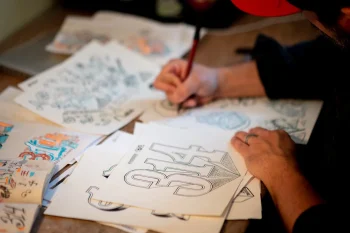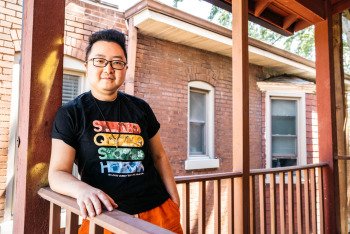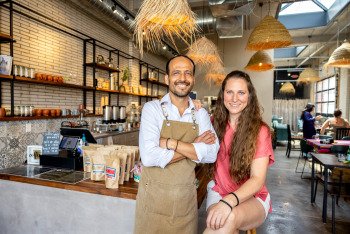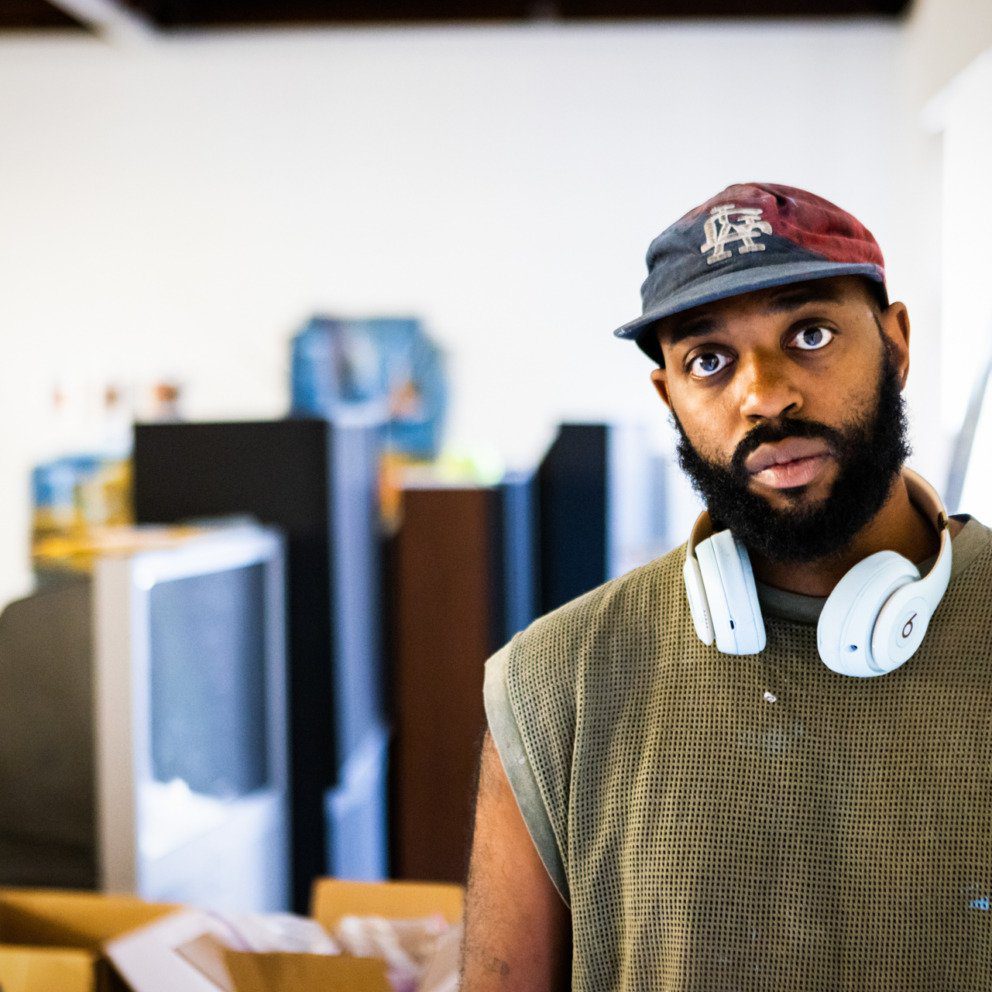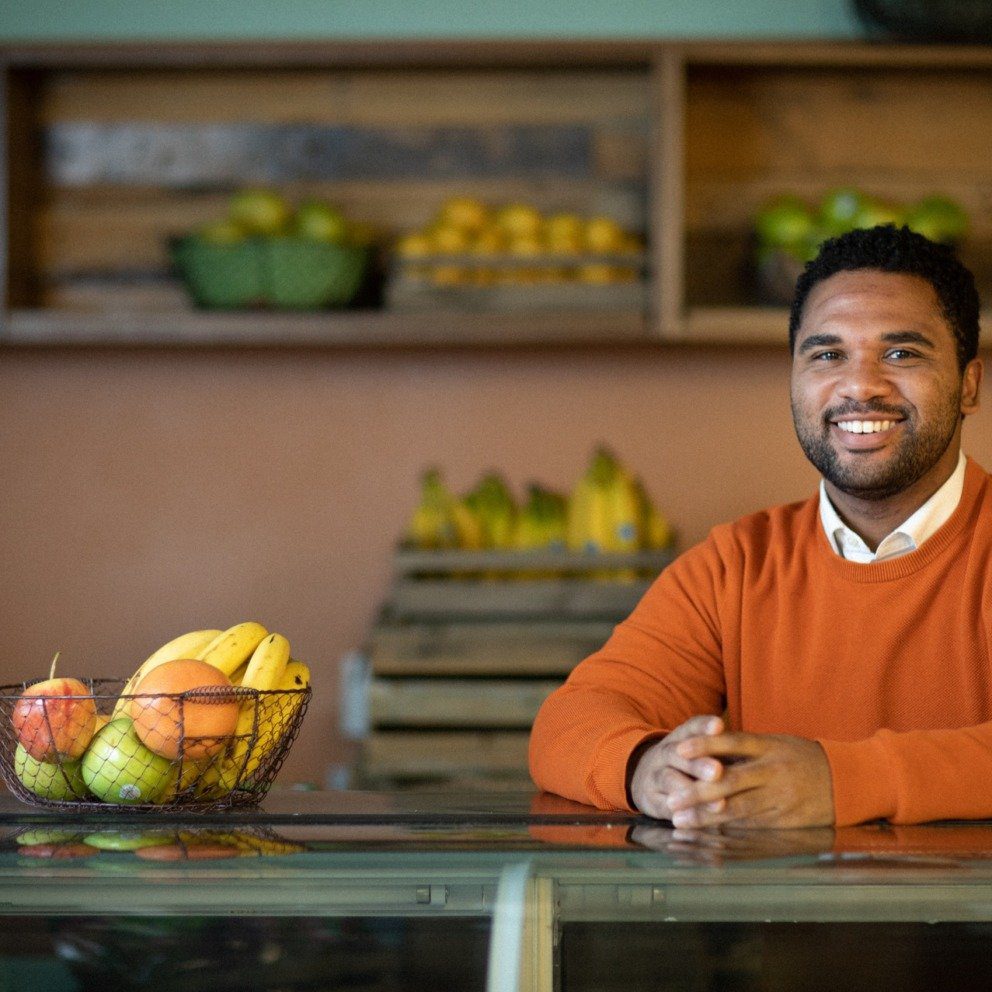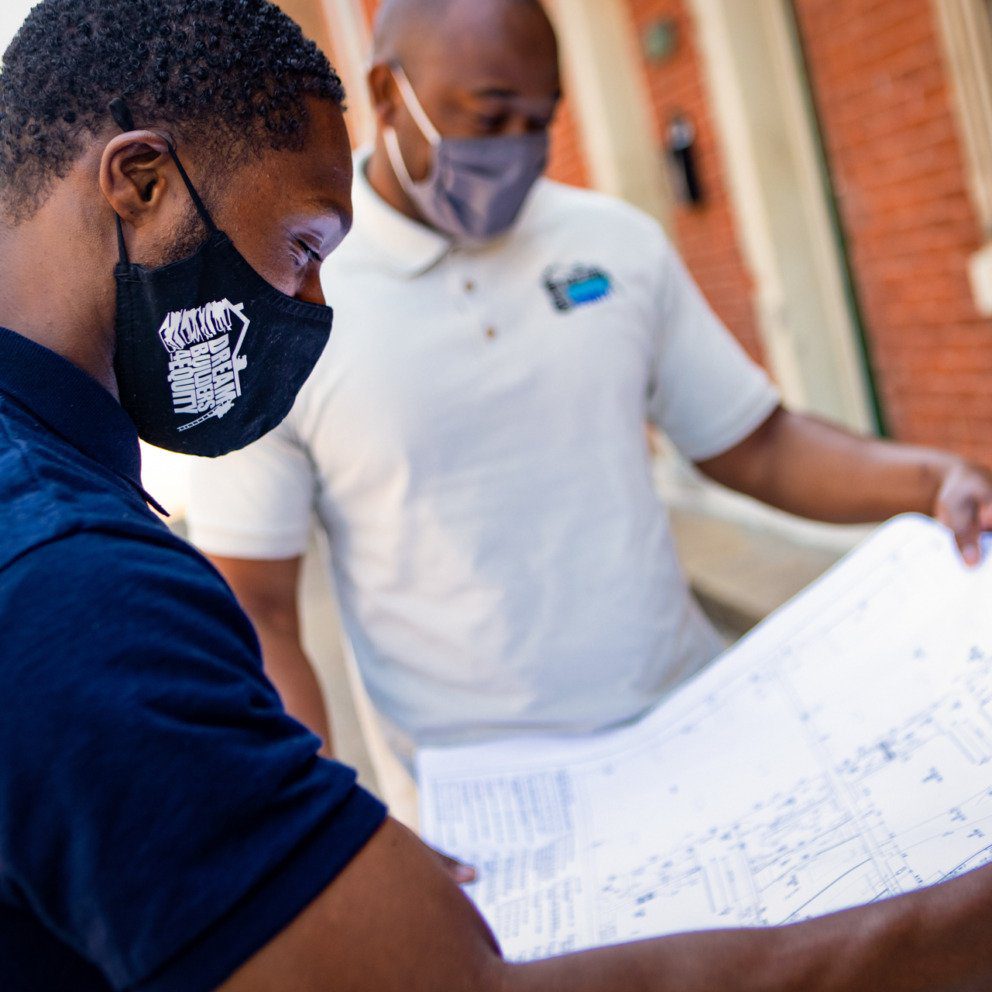Small Park, Big Impact
Through Pocketparks, Samantha Lee Smugala is bringing art, activation and opportunity to transform vacant lots into community gathering spaces.
When Samantha Lee Smugala went for a run in downtown St. Louis late last year, emptiness enveloped her.
“It was probably in the middle of the pandemic last October or November, but the streets were just empty,” says Lee Smugala. “It was a gray, overcast day. There was nothing going on. There were no people, no life and the city just had a completely different vibe.”
One scene with such a vibe — a vacant lot located at 10th and Locust streets — stopped her in her tracks.
“I stopped to snap a picture of what is now our first park, the DUC Park,” says Lee Smugala. “I actually sketched a racquetball court on the picture. That was the first concept – I posted it on social media, and it just started gaining traction.”
So much, in fact, that it ignited her existing desire to make an impact.
“I started thinking about this vacant lot, and how I could create some impact and change,” says Lee Smugala. “In this research, I found that St. Louis has a pretty significant vacancy problem. And why not tackle two birds with one stone: solve this vacancy problem, or attempt to relieve it with tactical urbanism — these lower-cost solutions that we can do to just transform that space in the most simple way, which provides value for that community and brings people together again.”
That experience pushed her to start Pocketparks — a nonprofit that works to reimagine and redevelop vacant lots into beautiful active community spaces.
“I like telling people that, yes, this is a parks project but really it’s much, much more than that,” says Lee Smugala. “We look at different needs of the communities and do a lot of community engagement. Each green space or park or outdoor space is designed to reflect what the community really wants and needs.”
And although each park will have its own personality, each Pocketpark will have three key components: art, activation and opportunity.
“That artwork piece not only acts as beautification, but it also can serve as somewhat of a reflection of the community,” says Lee Smugala. “It can give the community identity, and it can inspire conversation and insert culture and personality. So it really started to become much more than just a mural on a wall or a sculpture. It takes on a life of its own within the space.”
But Lee Smugala wants Pocketparks to produce more than just pretty pocket-sized parks, which is where the activation component comes in.
“We want to provide safe spaces,” she says. “There’s a reason to go there and to activate that space, whether that is for an event or to take a selfie. All of those things, whether they’re very simple concepts or more involved, create a reason for people to want to visit these spaces. And the more people that visit the space, the more activated it is, the more vibrant it is, the safer it is, because there’s more people in the area.”
And despite Pocketparks being less than a year old, it already has four parks in progress: Vessel Park, located under the MLK Bridge on Laclede’s Landing Blvd., which is in the design phase; West End park, located at 5900 Clemens Ave., which had its groundbreaking on September 12; the Urban Sunflower Field at the corner of Forest Park Parkway and Vandeventer, which Lee Smugala says will be reimagined for next year; and DUC Park on 10th and Locust streets, which is open and accessible while in phase one.
Lee Smugala is one of many in the region passionate about reducing vacancy while increasing vibrancy and safety. The transformation of the vacant lot in the West End into a park and public art installation is a collaborative effort with the St. Louis Arts Chamber of Commerce and its Art Heals Violence initiative, which received a $30,000 grant from the St. Louis Area Violence Prevention Commission for the project. The lot is just one of seven that the Arts Chamber plans to transform, with the help of partners the West End CID, St. Louis ArtWorks and Pocketparks. Sandy Brooks, executive director of the St. Louis Arts Chamber of Commerce, sees art – both for those who create it and those who experience it – as a way for individuals to express themselves, for the prevention of violence, and also a way for those who have experienced violence to recover from their trauma.
“The arts are uniquely situated to have an in-person, on-the-ground effect,” says Brooks. “It’s encouraging people to express themselves and validating that expression. By providing an outlet for individuals in neighborhoods to do that in creative ways – not only does violence go down because you’re reducing vacant lots, but you’re creating cohesion and building community.”
The number of people and organizations collaborating on these efforts gives Brooks hope for the impact that transforming these spaces will have.
“From my perspective, it’s about time we start to have everybody at the table to contribute,” says Brooks. “You can’t do just one thing, and expect it to have a systemic effect. You need to have a systemic process to solve systemic problems.”
Lee Smugala hopes that the Pocketparks start a ripple of change that can be felt throughout the community.
“More people are going to patronize local businesses in the area around a park, and it really just starts to kind of become this platform to build up the ecosystems of our communities,” says Lee Smugala. “And that’s really where the opportunity stems from — what are we doing to create opportunity for the community? Whether that is indirectly boosting economic development, creating a space that people can have community meetings in, overflow for a local restaurant to host outdoor dining or space to have outdoor fitness class there. It starts to really become a huge asset for these communities.”
“And if it wasn’t for the community embracing it, I don’t think it would be possible.”
Join the Story
- Volunteer with or donate to Pocketparks.
- Volunteer with or donate to the St. Louis Arts Chamber of Commerce.
- Learn more about the St. Louis Arts Chamber of Commerce’s Art Heals Violence initiative.
- Read and watch HEC Media’s story on Pocketparks.

